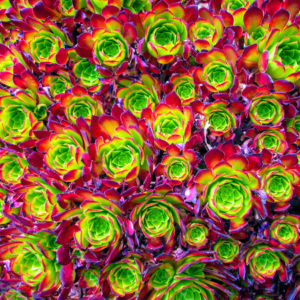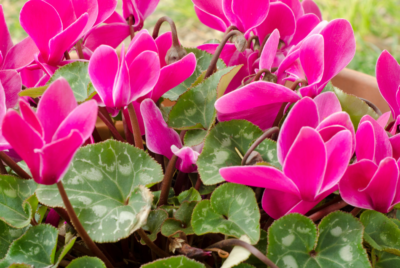Best Autumn Plants
Most plant enthusiasts eagerly anticipate the arrival of autumn, as it brings a stunning array of colorful foliage that can brighten up any indoor space or garden. As the seasons change, it’s the perfect time to add some seasonal flair with autumn plants that thrive in the cooler temperatures. Whether you’re looking for vibrant flowers or richly-hued foliage, there are plenty of options to choose from to transform your home and garden into a cozy autumn retreat.
Key Takeaways:
- Vibrant Colors: Autumn plants like mums, asters, and pansies provide a pop of rich, vibrant colors to your home and garden.
- Long-lasting Blooms: These plants can bloom well into the fall season, adding beauty and charm to your surroundings for an extended period.
- Low Maintenance: Most autumn plants are easy to care for, requiring minimal upkeep to thrive and brighten up your space.
- Seasonal Decor: Incorporating autumn plants into your home décor can instantly add a touch of seasonal charm and warmth to any room.
- Multiple Options: There is a wide variety of autumn plants to choose from, allowing you to mix and match different colors and textures to create a visually stunning display.
Best Indoor Plants for Autumn

Colorful Succulents to Warm Your Space
Some indoor plants are perfect for adding a touch of warmth and color to your home during the autumn months. Succulents are a great choice as they come in a variety of vibrant hues like deep reds, oranges, and purples. These low-maintenance plants thrive in the dry indoor air and can add a cozy feel to any room.
Aromatic Herbs to Spice Up Your Home
One way to bring the scents of autumn indoors is by incorporating aromatic herbs into your home decor. Herbs like rosemary, thyme, and sage not only add a fresh and pleasant fragrance to your space but can also be used in cooking to enhance your seasonal dishes. Their greenery can also liven up your indoor garden.
It’s important to note that while these herbs are safe and enjoyable to have around, some varieties like poisonous plants should be kept out of reach of children and pets. Ensure you research each plant and its care requirements before purchasing to maintain a healthy indoor environment.
Vibrant Outdoor Plants for Cooler Days
Fall-Blooming Flowers for Your Garden
FallBlooming As the days get shorter and temperatures drop, it doesn’t mean your garden has to lose its colorful charm. Planting fall-blooming flowers can keep your outdoor space vibrant and lively well into the autumn months. Consider adding chrysanthemums, dahlias, or asters to your garden to enjoy their cheerful blooms even as the days grow cooler.
Hardy Shrubs to Last Through the Seasons
Days When dicking out shrubs for your garden that can endure the changing seasons, opt for hardy varieties that will stand the test of time. For instance, evergreen shrubs like boxwood or winterberry can provide year-round interest with their lush green foliage or bright red berries. These shrubs not only add beauty to your outdoor space but also withstand cold temperatures, making them a reliable choice for cooler days.
Caring for Your Autumn Plants
Indoor Plant Care Tips for the Fall
Despite the cozy temperatures indoors during the fall, your indoor plants still need proper care to thrive. To ensure they stay healthy and vibrant throughout the season, here are some crucial tips:
- Adjust watering: As the days get shorter and cooler, your plants will need less water. Be sure to check the soil moisture before watering.
- Monitor humidity: Indoor heating can decrease humidity levels. Consider using a humidifier or placing a tray of water near your plants to maintain optimal moisture levels.
- Rotate plants: To ensure even growth, rotate your plants every few weeks to expose all sides to sunlight.
The key to a successful indoor plant care routine in the fall is to pay attention to their changing needs and adjust your care accordingly. The healthier your plants are, the more they will brighten up your home as the autumn days grow shorter.
Outdoor Plant Maintenance as Temperatures Drop
Despite the cooler temperatures, your outdoor plants still require attention to ensure they survive and thrive during the fall season. Here are some crucial guidelines to keep your outdoor plants healthy:
Care Tips
| Task | Details |
| Trimming and Pruning | Remove dead or diseased foliage to promote healthy growth. |
| Protecting from Frost | Consider covering delicate plants at night to shield them from frost damage. |
| Providing Proper Drainage | Ensure pots and containers have adequate drainage to prevent waterlogging. |
Outdoor plant maintenance becomes crucial as temperatures drop to ensure your plants withstand the changing weather conditions. By following these guidelines, you can help your outdoor plants stay strong and vibrant throughout the autumn season.
Final Words
Following this guide to the best autumn plants to brighten up your home and garden, you can enjoy the beauty of nature even as the days get colder. Whether it’s vibrant mums, cheerful pansies, or striking ornamental kale, these plants will add warmth and color to your outdoor spaces. For more ideas on how to enhance your garden this fall, check out these 30 Fall Flowers to Plant for a More Colorful Garden. Embrace the season and create a cozy, inviting atmosphere with these stunning autumn plants.
FAQ
Q: What are some of the best autumn plants to brighten up my home and garden?
A: Some of the best autumn plants to brighten up your home and garden include chrysanthemums, pansies, ornamental kale, asters, and flowering cabbage.
Q: When is the best time to plant autumn plants?
A: The best time to plant autumn plants is typically in late summer to early fall, as this allows the plants to establish their roots before the colder weather sets in.
Q: How often should I water my autumn plants?
A: It’s important to keep the soil consistently moist but not waterlogged. Depending on the weather, you may need to water your autumn plants 1-2 times per week.
Q: Do autumn plants require a lot of sunlight?
A: Most autumn plants thrive in full sun to partial shade, so it’s important to place them in an area where they can receive at least 6 hours of sunlight per day.
Q: How can I care for my autumn plants to ensure they stay healthy and vibrant?
A: To care for your autumn plants, make sure to deadhead any spent flowers, fertilize them monthly with a balanced fertilizer, and protect them from extreme weather conditions such as frost. It’s also a good idea to regularly inspect your plants for pests and diseases.

